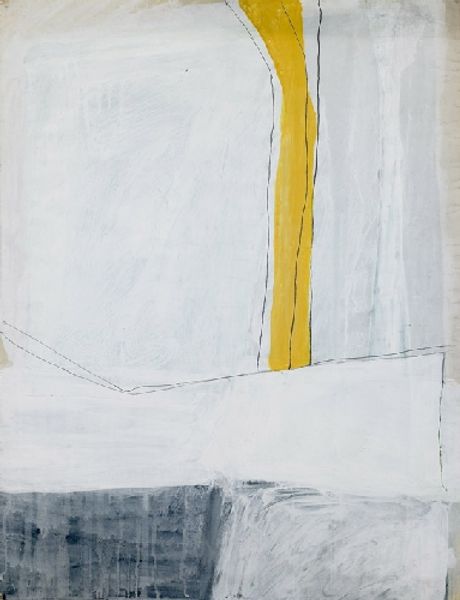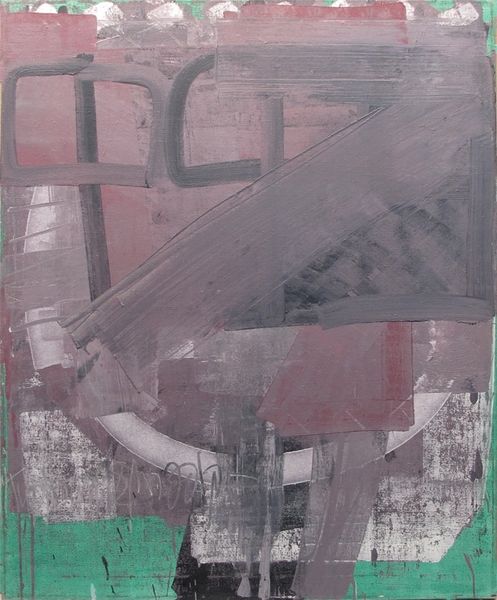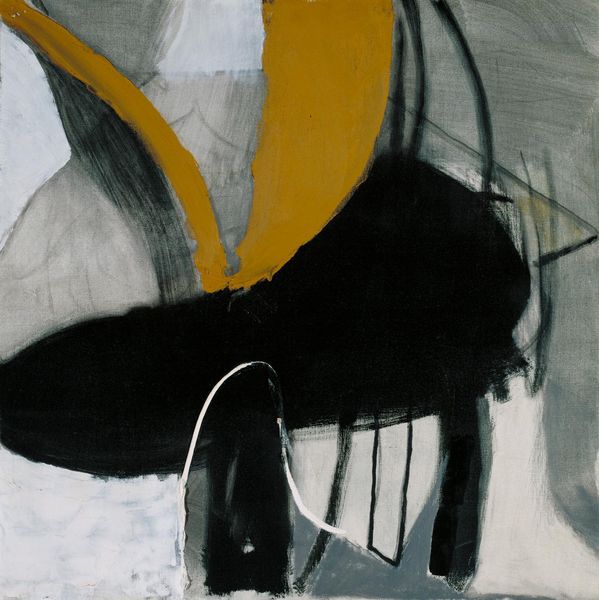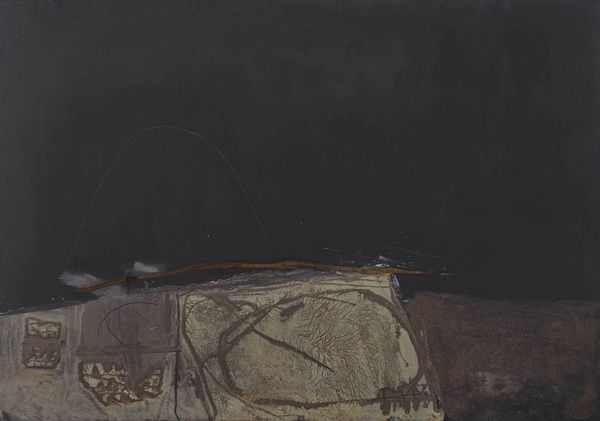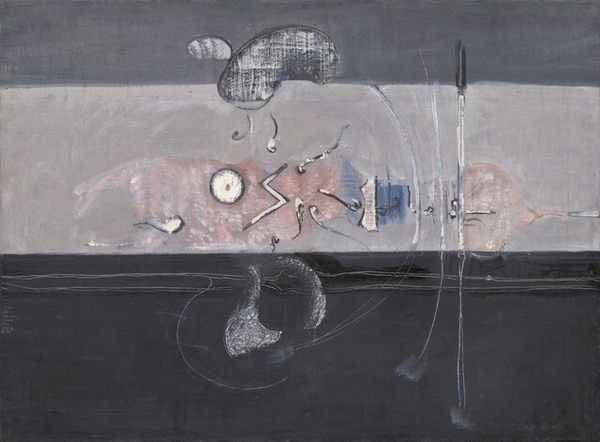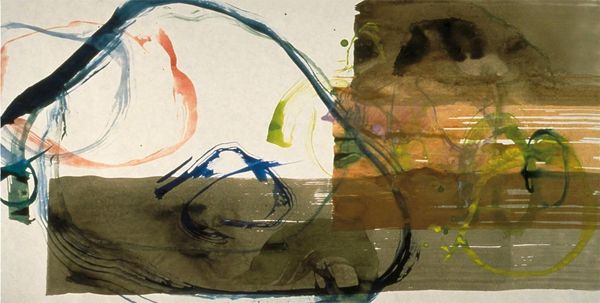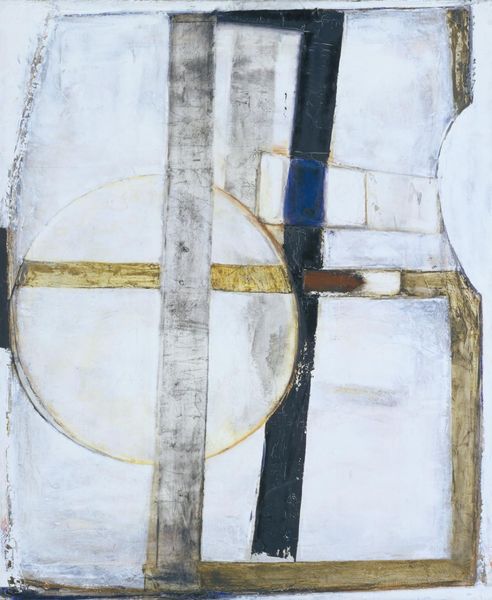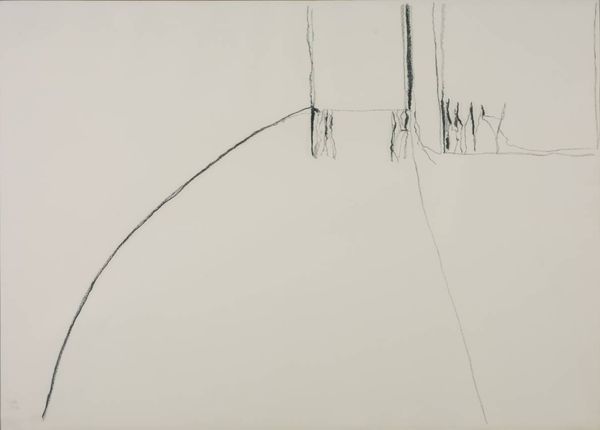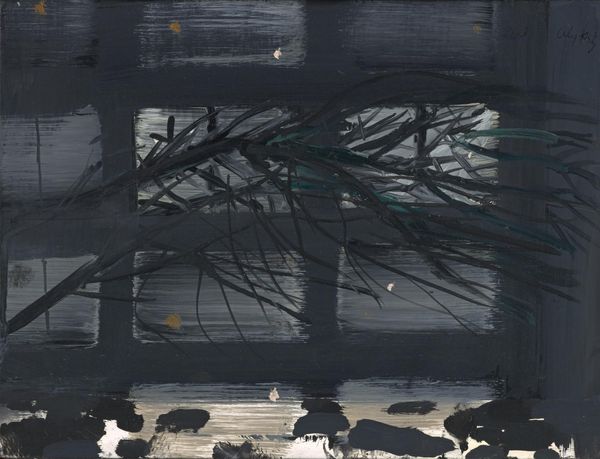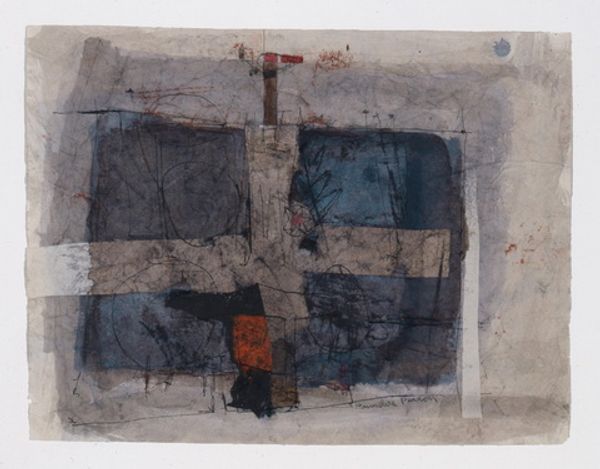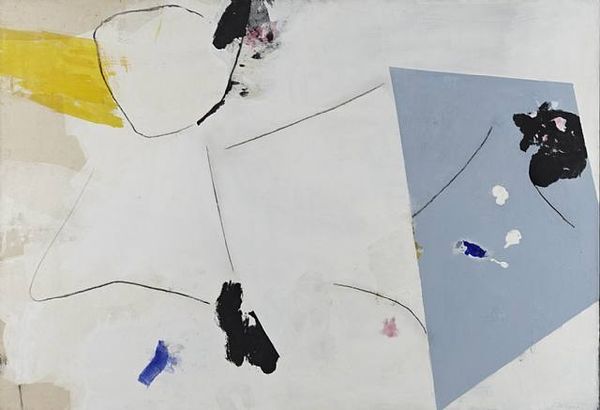
Dimensions: support: 1016 x 1524 mm frame: 1096 x 1605 x 65 mm
Copyright: © The estate of Roger Hilton | CC-BY-NC-ND 4.0 DEED, Photo: Tate
Editor: This is Roger Hilton’s "March 1960," a sizable oil on canvas work. I’m struck by its layered composition and somewhat muted palette. How do you interpret the symbolism within this abstract piece? Curator: The symbols here are less direct, more felt. Consider the dominance of grey, a color often linked to neutrality, but also to introspection and mourning. The overlaid lines feel like pentimento, suggesting layers of memory and revision. What do you make of the shapes? Do they feel representational or purely abstract to you? Editor: I see both. The dark shape on the left feels like a shadow, while the circle could be a sun or a moon. Curator: Precisely. The tension between the recognizable and the abstract is key. Hilton’s work often explores the boundary between internal and external realities, tapping into our shared visual vocabulary while resisting fixed interpretations. It evokes rather than dictates meaning. Editor: It's fascinating how a seemingly simple composition can hold so much symbolic weight. Curator: Indeed. It shows us how abstraction can be a powerful language for exploring the complexities of human experience and cultural memory.
Comments
Join the conversation
Join millions of artists and users on Artera today and experience the ultimate creative platform.
tate 8 months ago
⋮
Hilton’s work oscillated between complete non-representation and degrees of figuration. In the end he came to believe that was ‘only a step towards a new sort of figuration , that is, one which is more true’. Often apparently abstract shapes suggest parts of the body – usually female. But, as well as his forms, Hilton used the material of the work of art itself to evoke ideas of the body and its functions. He reversed the conventions of picture making by drawing into and over paint while the paint itself looks as if it has been smeared or laid on in blocks. Gallery label, February 2010
